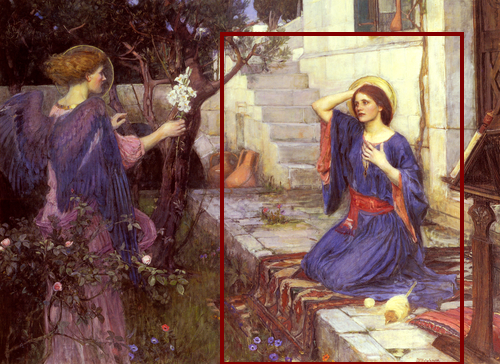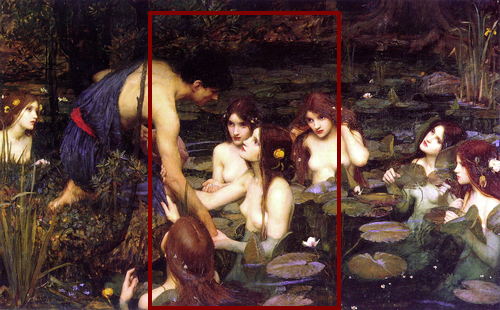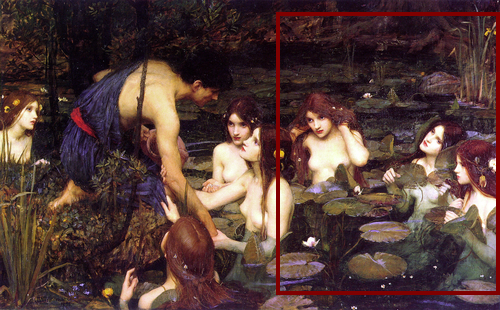This post is a series of images featuring paintings by the English artist John William Watrehouse (1849 – 1917). He was famous for his paintings of young beautiful women. Enjoy !
This site tries to make apparent the beauty hidden in images. In particular this post is a selection of images of the lovely women of famous English painter John William Waterhouse, He loved to paint women in mythological, arthurian or roman settings. Each woman in the paintings had a story. It will enhance enjoyment if the story is known, So take some time and read the story behind the women.
Choose an image, It will expand and scroll view. You can click control tabs on the upper left corner of the screen. Depending on the tab, you can (1)fast scroll (skip button), (2)expand, (3)minimize, (4)shift right or left, (5)pause or (6)scroll up or down. You will see details not noticed in normal viewing. This will reveal beauty hidden from you before. Enjoy !
Women in Mythology
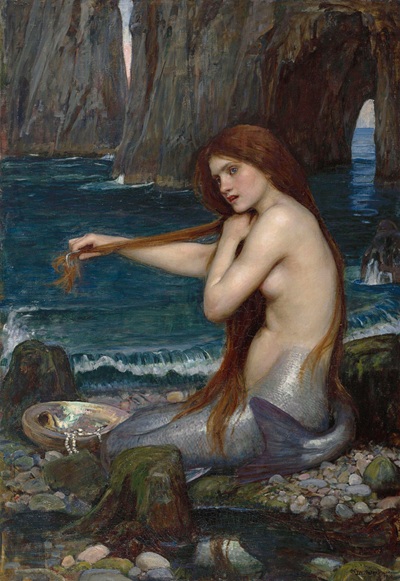
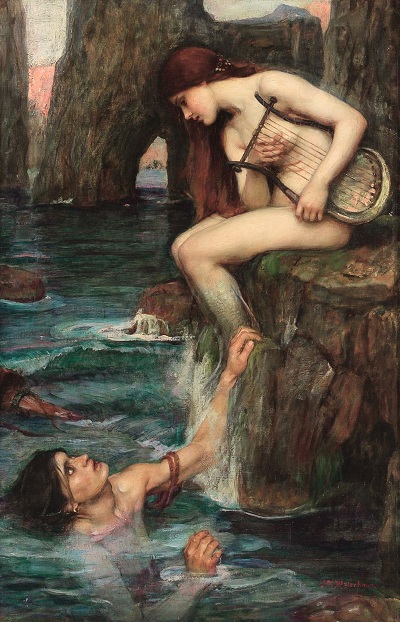
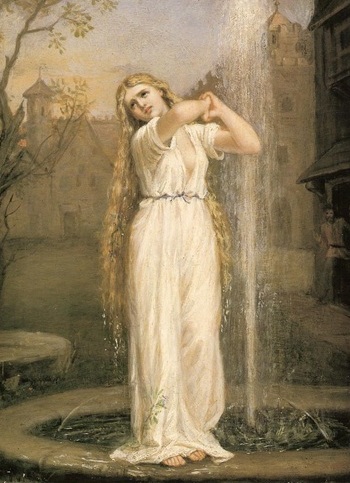

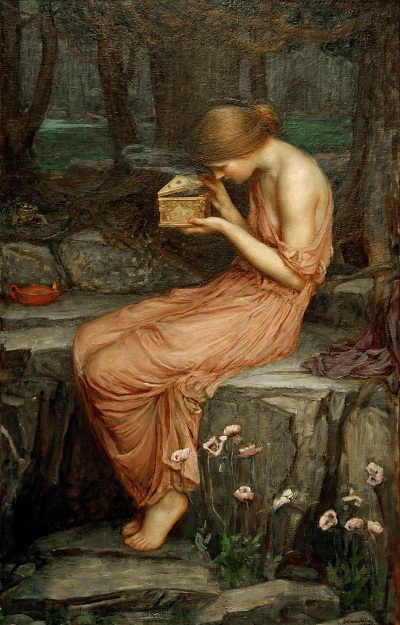
- A Mermaid (1900) : The inspiration was Lord Tennyson’s 1830 poem The Mermaid. The mermaid is lovely but her skin glistens unnaturally and terminates in the tail of a fish. This causes us to remember she is inhuman.
- The Siren (1900) : This depicts a siren sitting at the edge of a cliff, looking down at a shipwrecked sailor in the water. Is the siren trying to lure him to her? The sailor stares at her in amazement. What will happen next?
- Ondine (a water nymph) (1872) : Ondine meaning “wave” in Latin is a mythical water nymph adapted from ancient European traditions. She is not human, has no soul but can turn human if she loves a man, However if the man in unfaithful she is doomed to die. This was a popular motif in the 19th century and famous artists such as Jules Lefebvre, Paul Gauguin and Carl Wilhelmson have done their renditions. This painting by John Waterhouse shows the lovely Ondine rising from a fountain, modestly dressed showing her cleavage. This is his interpretation of this theme.
- The Danaides (1903) : The tale behind the painting. The fifty daughters of King Danaus, known as the Danaides, were forced to marry their cousins and kill them on their wedding night by order of the king. As penance for their crimes they were condemmed to Hell to fill a leaky vessel with water, a task that cannot be completed. Futile never ending labor in the underworld, that is their punishment. The painting by Waterhouse shows a moment in Hell where the beautiful women try to fill a vessel using pitchers. Their faces are sombre as they realize the futillity of their labor and the fact that it can never be completed. This is justice.
- Psyche Opening the Golden Box (1904) : Psyche a mortal of extraordinary beauty falls in love with the god Cupid. Cupid’s mother the goddess of love Venus is displeased. She sets Psyche some impossible tasks. One task is to get a golden box from Persephone, queen of the underworld. She is warned not to open it for it contains a beauty lotion fit for dieties. In the painting, Psyche, frail, young and innocent is overcome by temptation hesitantly opens the box. Chaos errupts. Wiaterhouse shows great artistry in his composition. The slim maiden beauty with bare shoulders in a solitary space wondering wether she should open the box or not. She gives in and opens the box. Beauty and innocence loosing to human greed.
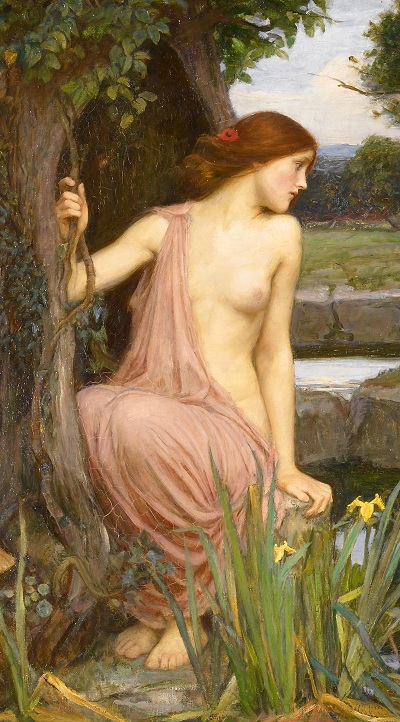
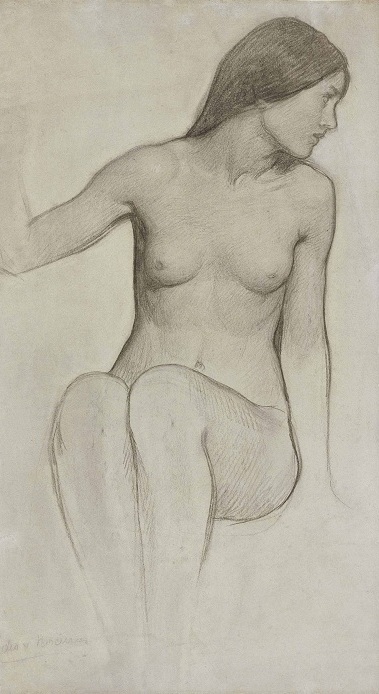
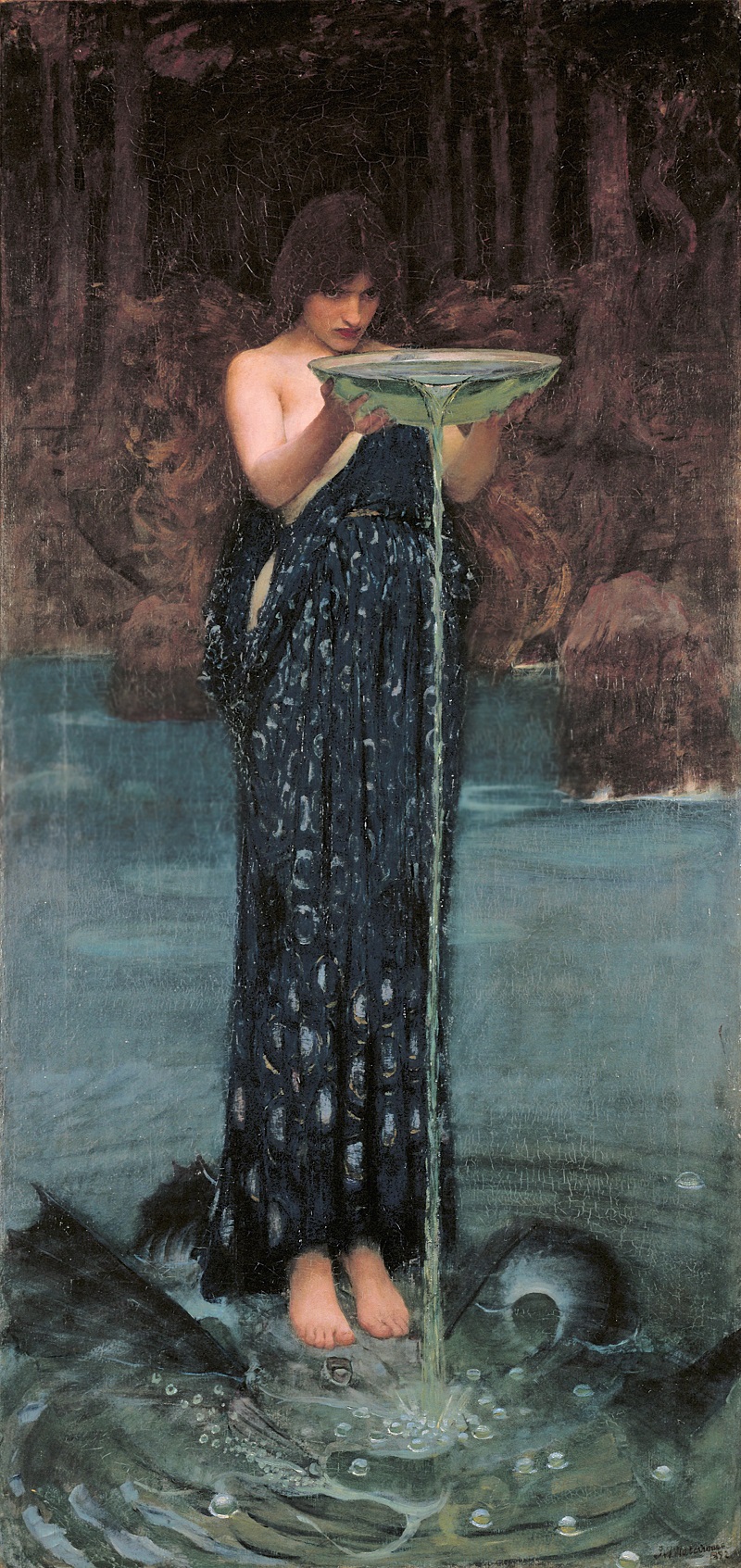
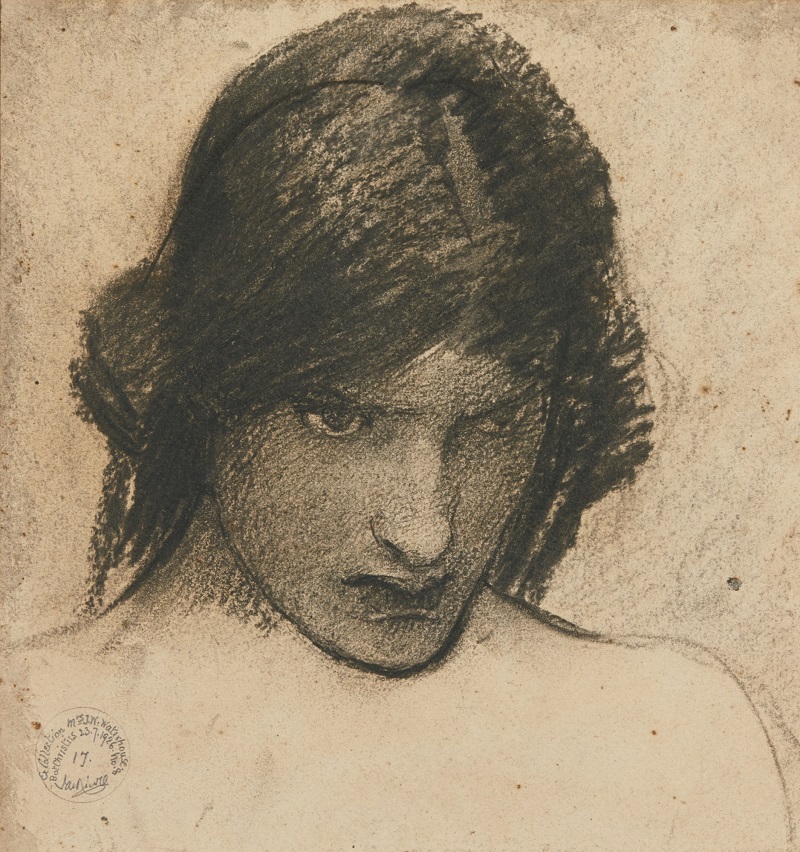
- Echo and Narcissus (1903) : This is a partial view focusing on Echo the nymph. The complete painting includes Narcissus contemplating his own reflection. The story. Echo is a mountain nymph from Mount Cithaeron. She talks too much and is cursed by the goddess Juno for distracting her from her husband the god Jupiter who has affairs with some other nymphs. The curse prevents Echo from initiating a conversation. She can only repeat the final parts of another person’s speech, which is an “echo”. Shortly afer, Echo spies Narcissus and falls in love. However Narcissus is a vain man interested only in himself. Echo tries to court him but due to her inability to communicate and also because of the self centered Narcissus, she is harshly rejected. Later Narcissus is cursed by Echo’s friends so that he falls in love with his own reflection in the water. Narcissus cannot look away and wastes away. He says ” Oh marvellous boy, I loved you in vain, farewell”, not realizing that the reflection of the boy he loves is Narcissu himself. Echo loves him still and repeats “farewell”, then dies of heartbreak. The painting shows Echo watching Narcissus in longing while the self centered Narcissus, interested only in himself looks at his reflection in a body of water.
- Study for Echo : A rendition of Echo’s body, young, slim and full of life. This shows that Waterhouse was a master painter and draftman.
- Circe Invidosa (1892) : Invidiosa in Latin means “envious” or “jealous,” So the title could be “Circe jealous”. Circe was a mythical enchantress in Homer’s “Odyssey”. She was in love with the sea god Glaucus, and Scylla was her rival. Jealous, Circe poisoned the water where Scylla bathed and transformed her into a fearsome monster. The painting shows Circe pouring her poison an unhealthy green portion into the water. At her feet, you can already see Scylla transforming into a monster. Circe sees this but continues pouring. Circe’s face is a devil mask, a mixture of jealousy, envy, hate and the realization that she is condeming Scylla to eternal doom. Circe’s tortured face is the center of the painting. Can a human condem a fellow human to eternal doom?
- Circe Invidosa detail study : A study of Circe’s tortured face. This says it all.
Tragic Beauty in the Waterhouse universe
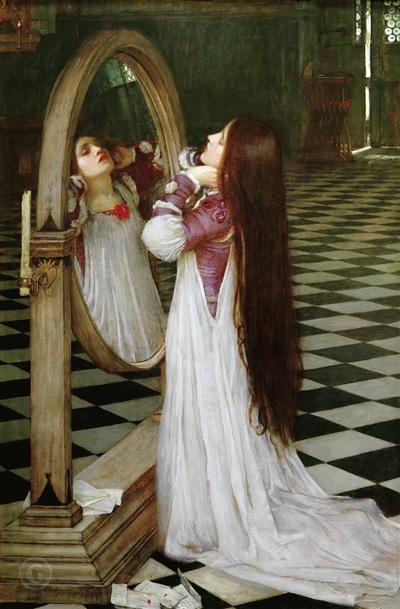
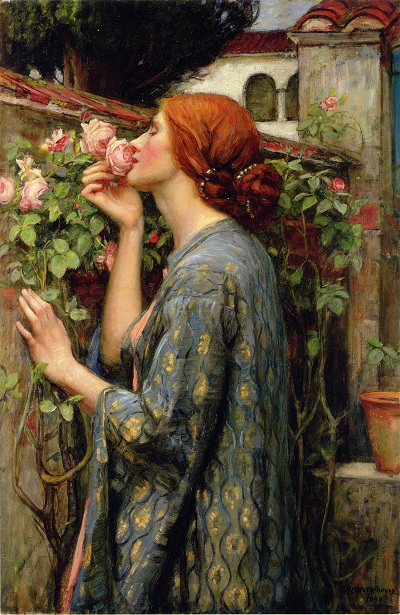

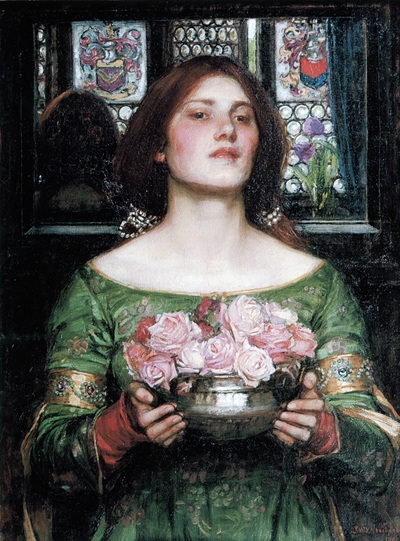
- Mariana in the South (1897) : This was inpired by a poem by Lord Tennyson named Mariana. In the painting Mariana is lost in thought, praying for her lover who rejected her when she lost her dowry at sea. She is a beautiful maiden with flowing dress longing for love and freedom. This is very much like a similar painting “The Lady of Shalott” by the same painter. This was a typical theme for him.
- The Soul of the Rose (1908) : This painting is thought to have been inspired by a poem by Lord Tennyson called “Come into the Garde, Maud”. The poem speaks of a woman and thoughts of her lost love. However unlike many of John Waterhouse’s works, this is not a scene based on a love story. It is not a narative. It is simply the study of a beautiful woman in a garden. The woman in question shows no obvious sexuality, but her delicate hands, the scent of roses that one senses indicate a muted sensuality. This is one of John Waterhouse’s best known works.
- Ophelia (1894) : Ophelia is a character in Shakespeare’s play “Hamlet”. A young noblewoman of Denmark, potential wife for Prince Hamlet heir to the throne of Denmark. She becomes embroiled in intriges at court and dies a tragic death. The painting shows Ophelia just before she dies, She is beautiful. Is it the fate of all beautiful women to die young? That is the atmosphere in the painting.
- Gather Ye Rosebuds While Ye May (1908) : This was inspired by a well known poem by Robert Herrick (1591-1674). Time flies by and flowers must be plucked in their prime, for the beauty of flowers is short lived and transient. A beauitiful woman in her prime holds out the flowers, an obvious reference to the fact that the beauty of the woman herself is transient. This painting like the painting “The Soul of the Rose” by John Waterhouse is non narative. It is a study of things in nature that are beautiful but transient.
women in the Stories
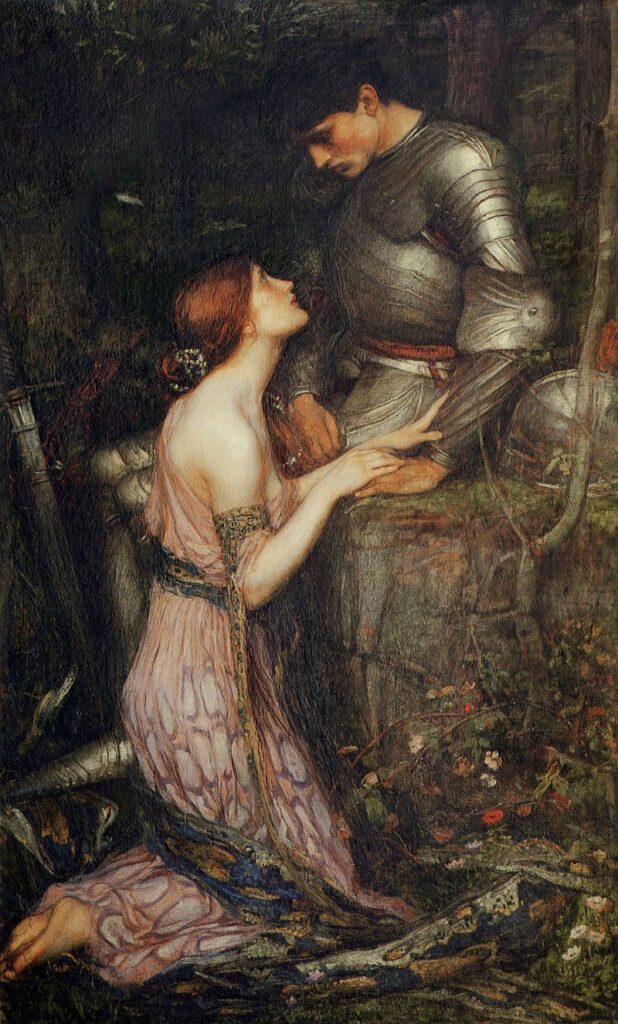
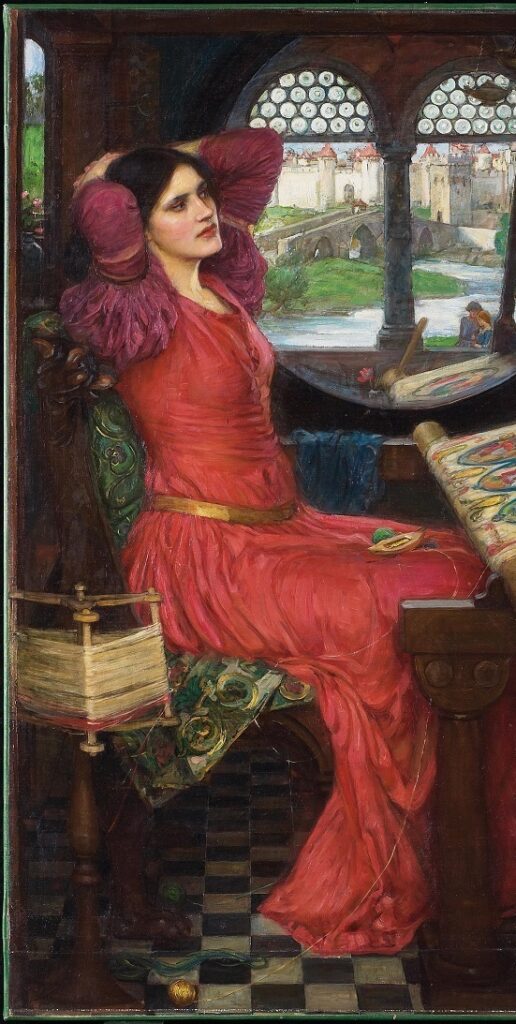
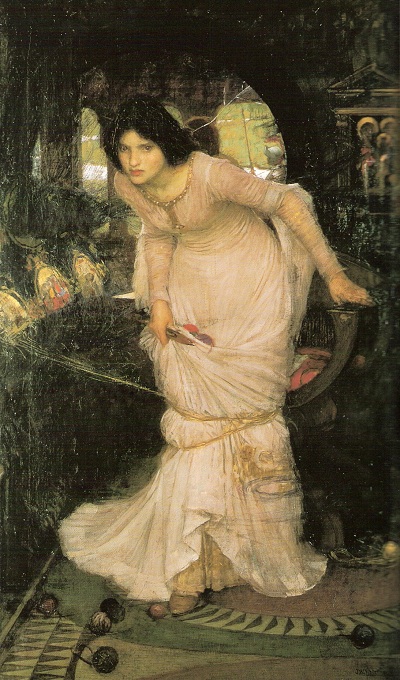
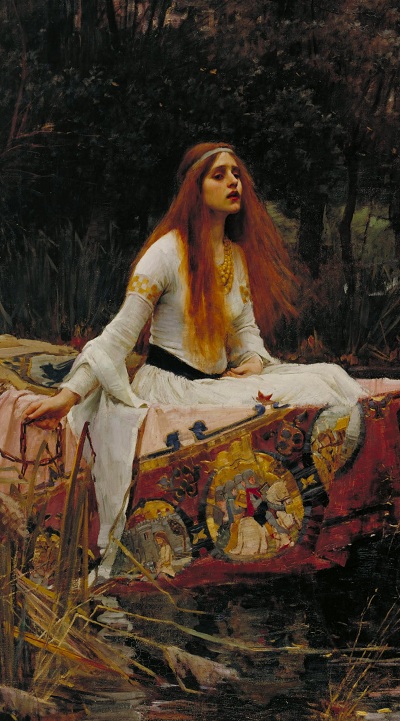
This is based on John Keat’s poem “Lamia”. Lamia is a mythical creature half human, half beautiful girl who preys on men.
- Lamia (1905) : This painting depicts the tension between knight in shining amour and Lamia (beautiful girl). The knight looks at the girl gently while the girl looks with seeming adoration at the knight. The girl’s skirt is serpant-like, symbolizing her inhuman nature, yet her soft slender shoulders show her womanly beauty.
The source of the following 3 paintings titled “The Lady of Shalott” is a poem by 19th century English “Poet Laureate” Alfred Tennyson. He wrote a lot of popular poems that are appreciated even in present day England. Maybe you know “‘Break, Break, Break'” or “Timbuktu”? Alfred Tennyson is the author. His influence extended not only to poetry but also to paintings. William Waterhouse painted three versions of “The Lady of Shalott”. The poem itself is set in Arthurian legend and is the tragic story of Elaine of Astolat, a young lady isolated in a tower upriver from Camelot. She is cursed and forbidden to look directly at the outside world. She is doomed to see the world through a mirror and weave what she sees into tapestry. However she falls in love with Sir Lancelot a knight in King Arthur’s round table and tries to meet him. This is a direct look at the outside world. The curse manifests and the lady dies en route to Camelot.
- “I am half sick of shadows,” said the Lady of Shalott (1915) : This is Alfred Tennyson’s words describing the lady’s frustration with her isolated existance. She is forbidden to look directly at the world. yet she yearns for more.
- The Lady of Shalott looking at Lancelot (1894) : The lady sees Sir Lancelot for the first time and falls in love.
- The Lady of Shalott (1888): The Lady of Shalott en route to Camelot to see Sir Lancelot. There is a ambiense of tragety. She knows the curse will manifest. In fact the lady dies on the journey.
The Annunciation (1914)
The virgin Mary being told by the archangle Gabriel that she will give birth to Jesus.
- The Annunciation (1914) : This painting (partial view) depicts the Virgin Marry being told that she will give birth to Jesus. She looks surprised but honored. She is portraited as a simple girl.
- The Annunciation (1914) : This is a partial view of the archangel Gabriel. In the painting she seems to be a woman. This is a departure from convention where Gabriel is shown as a man.
Hylas and the Nymphs (1896)
Hylas and the Nymphs (1896) : This depicts Hylas a companion of Hercules being lured into the water by seven naked water nymphs. He will never return. Hylas was the son of King Theiodamas of the Dryopians and was a companion of Hercules. They became Argonauts and accompanied Jason in his quest for the golden fleece on the ship Argo. En route Hylas was sent to find fresh water. He found water and also seven Naiads (water nymphs). The nymphs enticed him into the water. One holds his arms, one reaches out to his turnic. They are exited to have found such a handsome youth. Their faces glow with happiness. Any man would be happy to be attended by so many naked women. He does not return. This is a precautionary tale admonishing those who would fall into the wiles of women.
About
John William Watrehouse (1849-1917) was born in Rome to English parents William and Isabella Waterhouse both painters. In 1854 the Waterhouse family moved to London. There, from 1871 he attended the Royal Academy of Art Schools. Then in 1874, his painting “Sleep and his Half-brother Death” was exhibited at the Royal Academy summer exhibition and proved a success. After this he went from strengh to strengh. In 1883 he married Esther Kenworthy who was a painter in her own right. In 1895 he was elected full Academician and served on the Royal Academy Council. He died of cancer in 1917. He is buried at Kensal Green Cemetery in London.
Waterhouse first worked in the Academic style and then in the Pre-Raphaelite Brotherhood’s style. He became famous for his paintings of women taken from ancient Greek mythology and Arthurian legend. Waterhouse would choose a pivotal moment in a woman’s life in mythology or legend. He would paint the scene bringing to life the woman’s aspirations or calamity. A woman spurned, a woman moments befor her death. a woman longing for a life free of the chains of convention.
We must not forget that Waterhouse lived in 19th century England when the industrial revolution was in full swing. A woman’s place in society was changing. There are no writings to prove this, but Waterhouse had to have had his own thoughts on that matter. We can get some glimpses of his thoughts from his many paintings of beautiful women.
Anyway he was a master painter and we can get many hours of pleasure from just looking at his paintings and wondering what the women in Waterhouse’s paintings thought. Enjoy !
Notes
The comments above reflect only the thoughts the administrator had while viewing the images. They might or might not be comments by the artist, subjects or the photographers etc.. Please excuse any inaccuracies. You are welcome to leave comments in the comment space. Otherwise send messages to “kohi@scroll.kohibiz.com”.
Click the underlined titles. This will link you to the original site from which the images were taken. We believe there is no problem with the image license. Most are in the public domain.
The images are from Wikimedia Commons. If there are any problems please leave a message. Images will be taken down if necessary. Some images have been cropped from the original using the Vertical Scroller application program. This is to ensure the best viewing experience.
